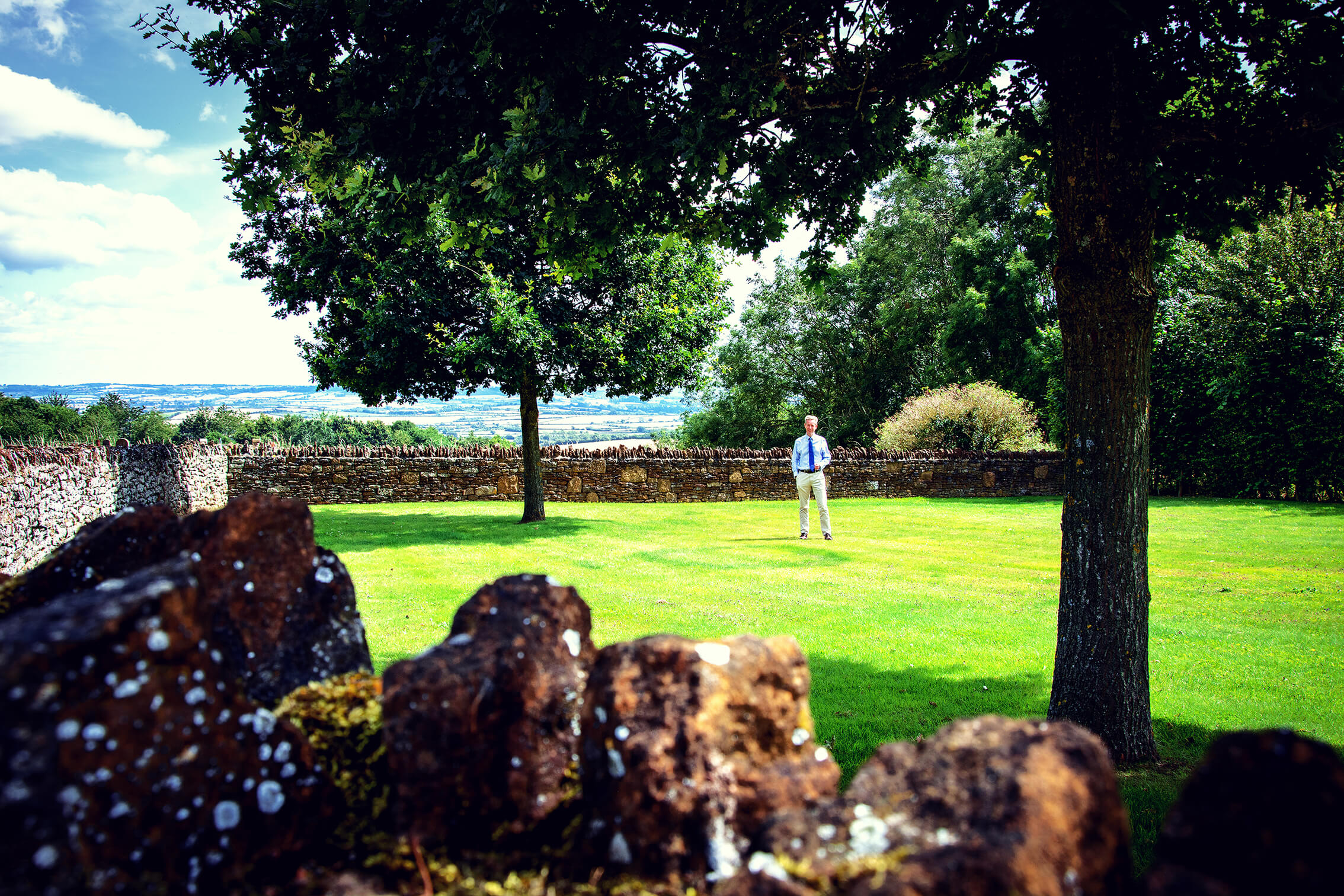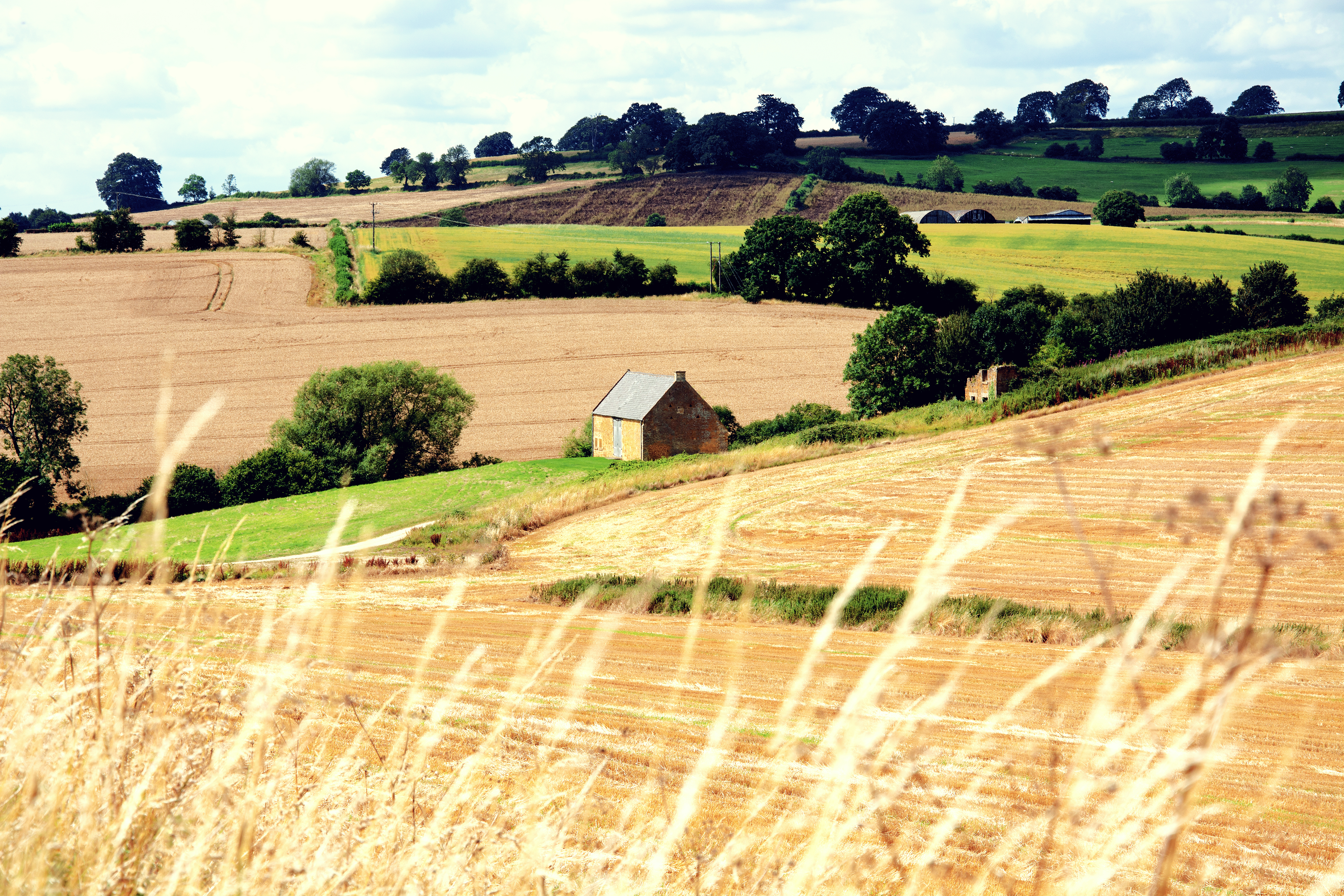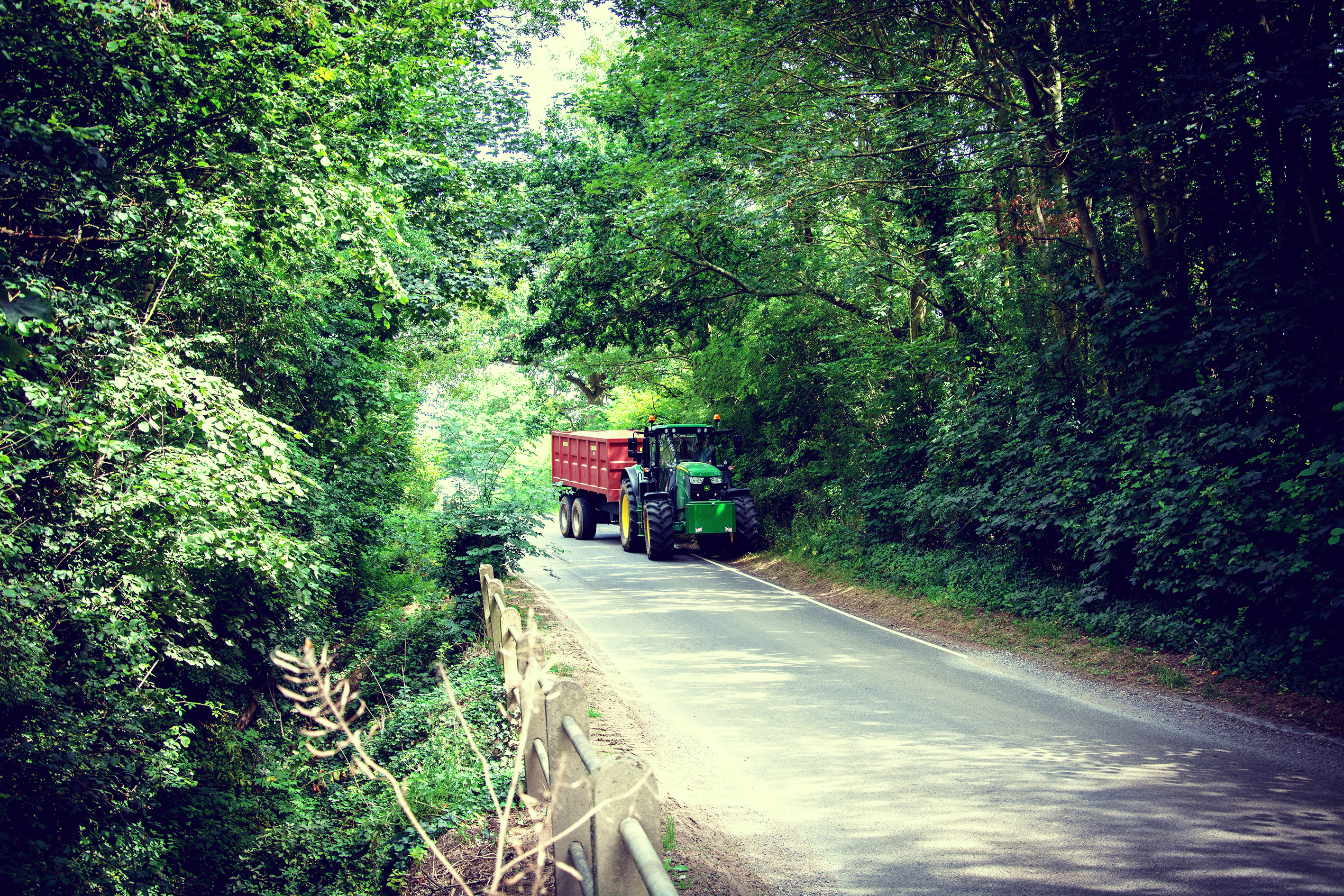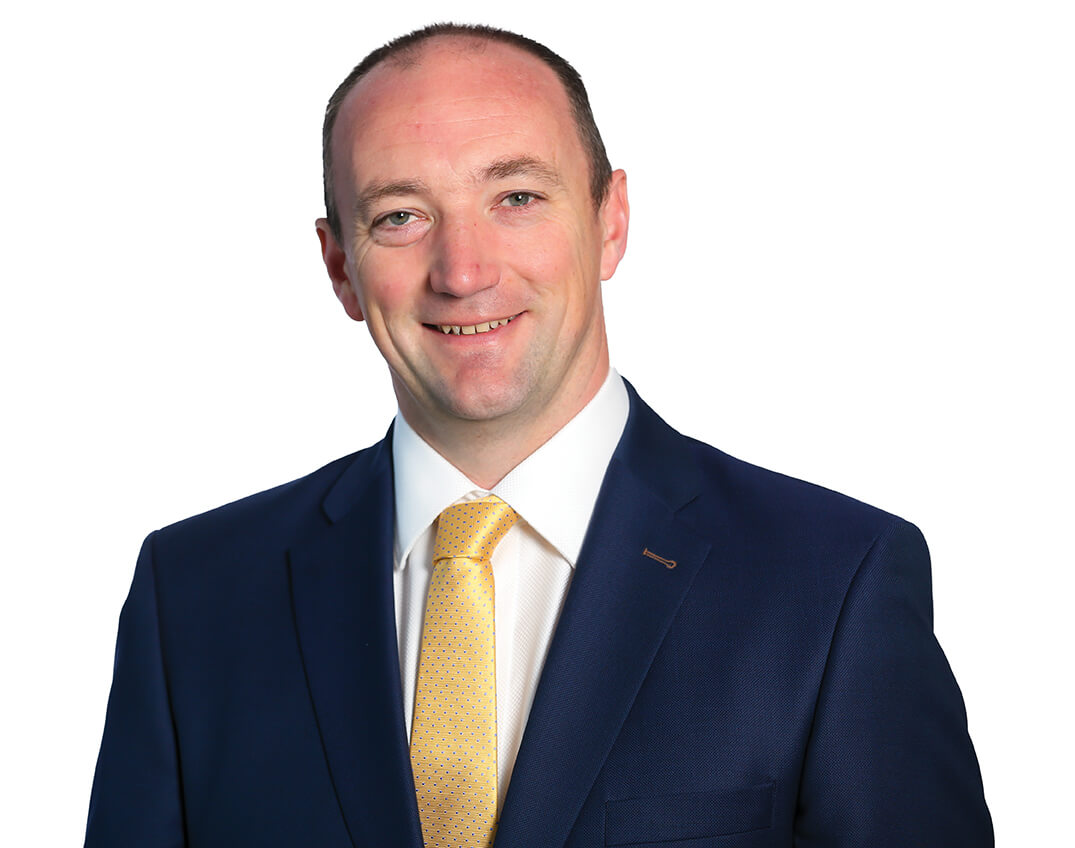


The True Value of
Estate Management
Every estate is different but each can benefit from a creative, strategic approach led by experts, as demonstrated by a unique project at a prestigious Cotswolds shooting estate.
It’s a bright August day when the Rural View team finds Carter Jonas partner Mark Charter at a client’s prestigious Cotswolds shooting estate. He has been involved in its management since 1996, when he acted to purchase it for its current owner, a high net worth family from America. At its highest point, it commands astonishing views from 1,000 metres atop a hill close to the honeyed stone village of Ilmington. In the 1990s, it extended to 343 hectares, with a Georgian mansion at its heart and a number of separate farmsteads, buildings and houses dotted across the land which spans the border between Gloucestershire and Warwickshire.
More than two decades later, the estate has undergone a sensitive but significant transformation. Arable, grassland and woodland now cover 1,000ha, with the main emphasis being supporting a first-class pheasant and partridge shoot. “In my career, I have been involved with four clients who have embarked on similar projects, where we’ve started with the house and farm and have created an estate around it,” Mark said. “But it is fair to say that this project was unique. The way in which we created the shoot has probably never been done anywhere else since.”
Driving around the estate, there are few visible clues as to how the owner’s ambition was realised. The 24 hectares of additional woodland planted to provide habitat for the game birds are discernible from the more mature trees, but only just. “Our challenge was to create the shoot quickly so we took the unusual step of planting large trees rather than saplings, which would have taken years to grow,” Mark said. “We were able to shorten the growing process by 30 years.“That was a big project, and included a team of tankers and waterers who made sure that what we planted survived.”

“The way in which we created the shoot has probably never been done anywhere else since”
The impact of the pine, beech and ash trees is softened by species such as silver birch, to create a deciduous woodland mix that’s typical of the surrounding countryside. They work in tandem with game cover in surrounding fields to enable gamekeepers to feed the birds back and forth to the drives used during the owner’s shoot, or the 12 days of private shooting held during the year.
Further evidence of the landmark project can be seen in several restored and converted farm buildings which now serve as stunning shooting lodges. It can also be seen in the creation of shooting butts, which was done by excavating channels at the end of one field to lower the position of the guns. There is also an improved, well maintained duck pond on the edge of the estate.
What Mark and the Carter Jonas team achieved would not have been possible without significant land acquisition; about 650ha had to be added to the estate which was not a straightforward process. Mark said: “Farmers don’t always want to sell land, so we had to find ways of working with them to secure the land but also maintain a good relationship with the sellers. In some cases that was a sale and leaseback agreement, and in others it was a land swap."

“We bought some land strategically, knowing that it would become a bargaining chip for other deals to be successfully concluded. It was vital to build an enduring relationship. We were the public face of the client, representing them in the community and in front of stakeholders. That’s part of good estate management – being able to maintain those relationships.”
“Good estate managers will look at the opportunities for their clients, and have access to the expertise to advise them on what will work best”
As part of negotiations, the first farmer who sold land to the estate has been able to continue to contract farm the same fields for 20 years. The typical rotation is predominantly wheat and barley, with oilseed rape as the break crop across much of the farmland. Beans are used in some areas to better satisfy the requirements of the shoot. About 200ha of land is in grass grazed by cattle and sheep under a variety of agreements with local livestock farmers.
Although the owners of the estate often travel, it is far from quiet. A team of staff work alongside Mark and his Carter Jonas colleagues to make decisions and ensure land and buildings are kept in pristine condition. The team includes gamekeepers, estate staff, gardeners, a house manager and domestic staff. When added to the farming, there is plenty of activity on site on any given day.

Learning all the time
The scale and objective of the project may have been unique, but Mark says the principles of good estate management are the same with every client. Mark said: “There are two strands to estate management. There’s the functional aspect which is all about systems and protocol. It sounds quite mundane but it’s essential. It includes making sure compliance work is done – health and safety considerations, construction, design and management regulations, risk assessments, asbestos surveys, energy efficiency statements, Basic Payment Scheme applications and the like. All those things need to be done well and kept on top of. That’s crucial to everything we do.
“Then there’s the creative, strategic work. Good estate managers will look at the opportunities for their clients and have the expertise to advise them on what will work best. It might be diversification, commercial or residential development, succession planning or environmental schemes. That’s the main advantage of using Carter Jonas. Every single client we work with has access to experienced staff across a range of disciplines; rural, energy, infrastructure, commercial, planning and development. We want to be the first to spot the opportunities.”
Mark says the Cotswolds estate is a great example of the range of expertise required to realise a client’s ambition. Buying and selling land, developing buildings, hiring staff and planting trees were just a few of the skills required. “Where good estate management adds value is through the attention to detail,” Mark added. “Another estate we work with is currently applying for a stewardship scheme. We have access to a botanical expert who has spotted a rare butterfly habitat and specific varieties of grasses which might turn an application from an entry level scheme to a higher level scheme, attracting higher tier payments.”
Getting to know Clients
Mark grew up on his family’s dairy and arable farm in Cowbridge, south Wales. He studied land management at the Royal Agricultural University in Cirencester before going straight into Carter Jonas at the age of 21. His first job was in the firm’s Marlborough office in Wiltshire, and his 28-year career has spanned both residential and rural. “Even when I worked in residential, I maintained relationships with rural clients and continued to work with them,” he said.
Mark is now the head of estate management and is based in Oxford. He sits on the Carter Jonas rural board. He has been in the role for less than a year, but says there are already certain themes emerging which will influence the future direction of estate management in the business. “The nature of estate management has changed enormously during my career,” he said, “and there are probably four areas where that is most evident.

“Every client has access to experienced staff across a range
of disciplines”
“Compliance is the biggest area – there are so many things land and property owners have to understand and consider now. Our clients are extremely busy and we help to support them to keep pace with the changes. Technology is another. There is so much available to us, but our clients need to understand which developments have a genuine benefit. Diversification is something most landowners have considered, but not all have acted on. In the future, we know developing a set of diverse, balanced income streams will be vital.
“The final area is more of an unknown. Management of the environment is changing, with direct support disappearing and more focus on public money for public goods. I can see how this might lead to a more collaborative approach estate owning landlords and their tenants working together to get maximum value from the land they own and occupy.” Global issues such as climate change, food security and emerging trends relating to a changing consumer diet also influence the firm’s thinking and inform the ideas brought forward. The nature of the job means Mark
and his estate management team have to be “generalists”.
He said: “In many respects we are project managers. We have to provide high level advice at a strategic level, but know when to put clients in touch with those within the firm who are experts in their own disciplines. What doesn’t change is that we learn from every client. Big or small, private or institutional. The goal is always to get to know the client – really get to know them – and establish what their objectives are, what matters most to them. We’re working with a client at the moment who has a social housing need for its staff – very different to what we are doing with this shooting estate, but we are still identifying a need and drawing upon our firm’s expertise to find the best way to achieve it.”

The Farm & Estate
Management Terrier
A bespoke tool allowing clients to combine important data and information relating to the management of their estate has been launched by Carter Jonas. The Farm & Estate Management Terrier simplifies vast amounts of information into a single, visual database built on three layers; land, asset ownership and responsibilities. It has been designed by estate managers for estate managers, with the dual goals of simplified administration and the identification of opportunities.
Key to the terrier’s effectiveness is that any farm or estate business can record the status of projects and any required actions. It facilitates business continuity, knowledge transfer and real-time communication, with information available to any number of users at the same time. Those with access can be seeing the same, up-to-date information from different places – from estate owner and farm manager to land agent, accountant or contractor.
Having all the information in the same platform means that new opportunities are more easily spotted. They include land or buildings for residential development, renewable energy, diversification and suitability for subsidy schemes. And, forecasting functionality allows users to lay out ‘what if’ scenarios. As well as opportunities to generate income, the terrier will highlight areas to reduce spending too. Contact Carter Jonas’ head of geospatial, Andy Williams or speak to your local Carter Jonas rural team to find out more.

The Estate
at a glance
1,000 hectares
of arable, grassland and woodland


80 hectares of woodland, including 24 hectares planted
to supplement game bird habitat
First-class
pheasant and partridge shoot
Georgian mansion with gardens
Land contracted to local farmers
Rotation includes wheat, barley, oilseed rape and beans
1,000m above
sea level at
highest point


EMAIL andy
0121 306 0392
Head of Geospatial
Andy Williams


EMAIL MARK
01865 404406
Partner
Mark Charter




The True
Value of Estate Management
Download a copy of Rural View


DOWNLOAD RURAL VIEW
Sign up to receive content like this directly to your inbox
Sign up to receive content like this directly to your inbox
REGISTER